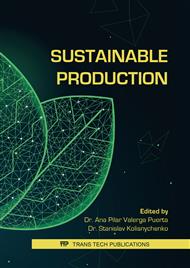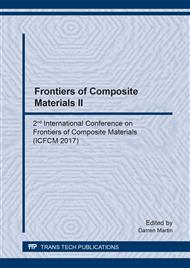p.110
p.115
p.120
p.125
p.130
p.135
p.143
p.149
p.156
Life Cycle Assessment on the Effects of Parameter Setting in Direct Recycling Hot Press Forging of Aluminum
Abstract:
Metallic material processing plays a significant role in terms of global environmental impact which contributes to the climate change phenomena that is a serious international environmental concern and the subject of much research and debate. Thus, energy-and resource-efficient strategies in the metal shaping technology domain need to be identified urgently. A frequent theme in the debates that surround waste and resources management is the extent to which the recycling of metallic materials offers genuine benefits to the environment. Solid state recycling techniques allow the manufacture of high density aluminum alloy parts directly from production scrap. In this paper the environmental impacts associated with ‘meltless’ scrap processing routes through hot press forging process with varying parameter has been studied. A comparative analysis has been performed, with different operating temperature and holding time of direct recycling hot press forging process AA6061 aluminum chip. The importance of an environmental performance analysis that included both parameter setting was discussed and highlighted throughout the paper. Finally, the application of the proposed parameter setup has resulted in the setting up of an eco-process. Indeed, LCA study on recycling (solid-state) are recommended as well it gives a noteworthy benefit to the environment and to fill the knowledge gap.
Info:
Periodical:
Pages:
143-148
Citation:
Online since:
May 2018
Authors:
Price:
Сopyright:
© 2018 Trans Tech Publications Ltd. All Rights Reserved
Share:
Citation:



